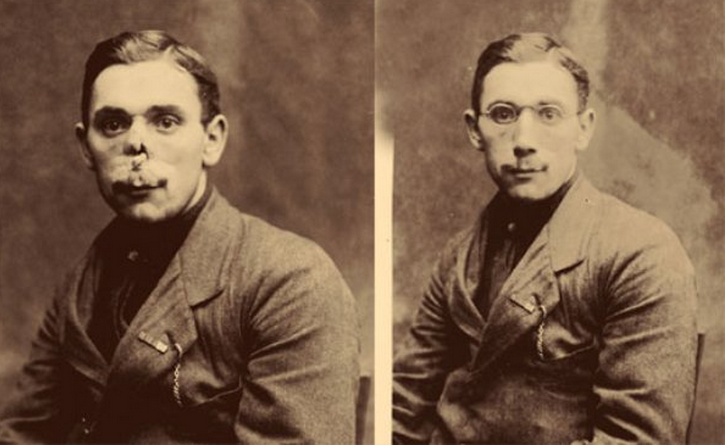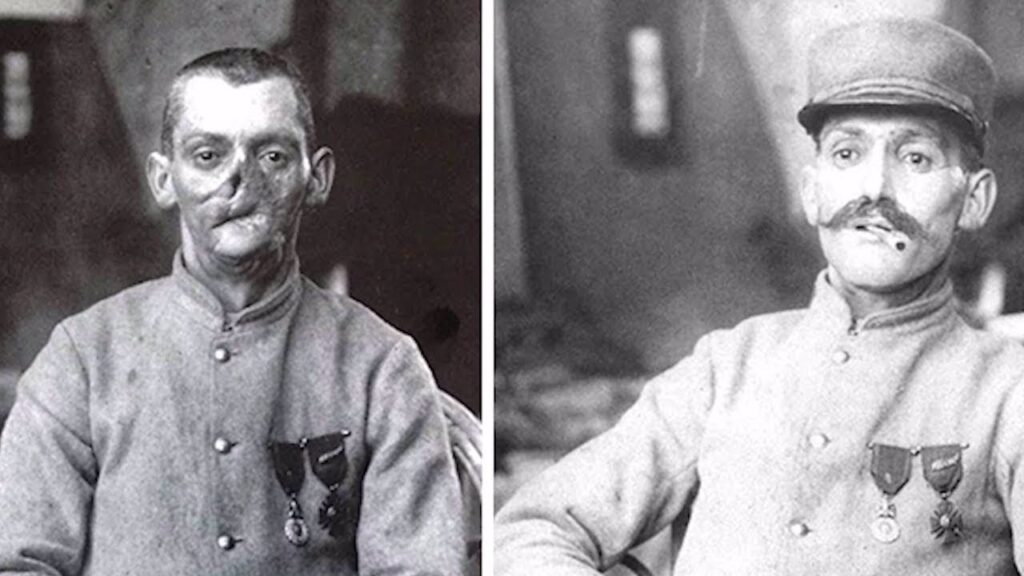With WW1, the art of war changed drastically. The US and its allies began the war with divisions of cavalry, and commanders quickly realized that trying to fight against machine guns, strafing airplanes, and bomb-dropping dirigibles from horseback would probably never again be effective. The way soldiers suffered changed as well. Medicine had progressed to enable doctors to save the lives of soldiers who in past wars would have certainly died on the battlefield, and the kinds of injuries incurred also changed. As a result of rapid-fire machine guns, trench warfare, and chemical weapons, thousands of soldiers had facial and head injuries like had never been seen before.
Because even in the midst of horror there is goodness and grace, doctors began to find ways to treat these soldiers. Horrendous suffering and grotesque, maimed faces helped birth the field of plastic surgery and facial reconstruction. Doctors, led by pioneer Harold Gillies in England, did what they could to restore the faces of soldiers that had been literally evaporated by modern weapons. But there was only so much they could do.
That’s when the artists took over. Both in England and France, studios were opened to offer relief to soldiers when the doctors had done all they could. These artists began creating masks made of extremely thin copper or silver that artfully covered the parts of a man’s face that war had taken away and gave the illusion of the man’s prior visage. Both artists, Anna Coleman Ladd, an American working in Paris, and Francis Derwent Wood, an English sculptor working at a place called the Tin Noses Shop, created masks to help these disfigured and demoralized men regain some hope of life after war.
My newest novel, Questioning Grace, takes place during World War 1 and is set both in Wyoming and in hospitals in England and France. In its pages, you can meet both fictional and historical figures who are confronted by the tragedy and challenges that came with dealing with facial wounds and meeting that horror with determination and innovation. Questioning Grace is available on Amazon along with my other four novels.
PS – if you are interested there are several historical films about Anna Coleman Ladd and the Tin Noses Shop. Here’s a link to one: https://www.artandobject.com/video/anna-coleman-ladd-and-facial-prosthetics-world-war-i




2 Responses to Tin Noses Shop